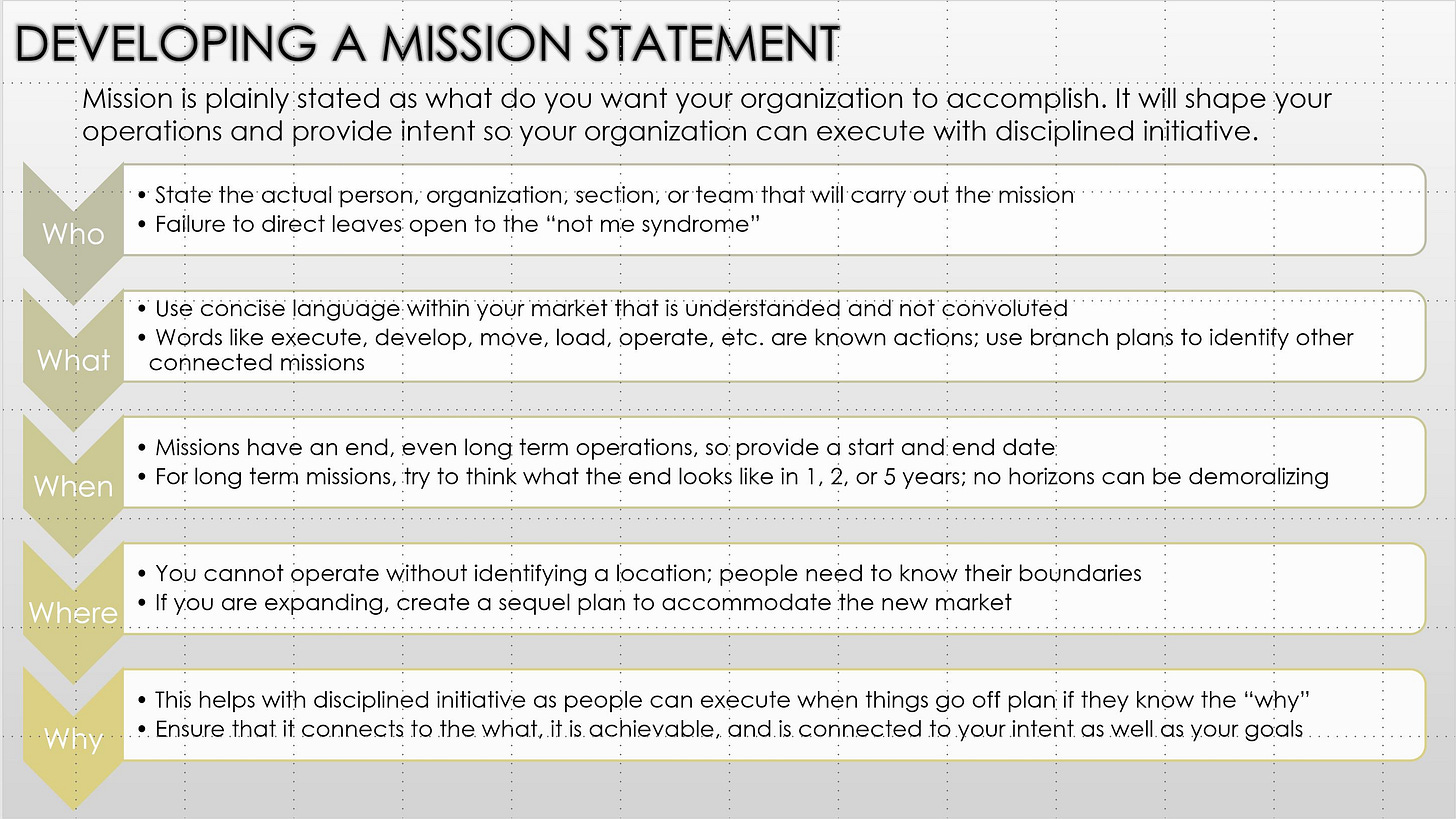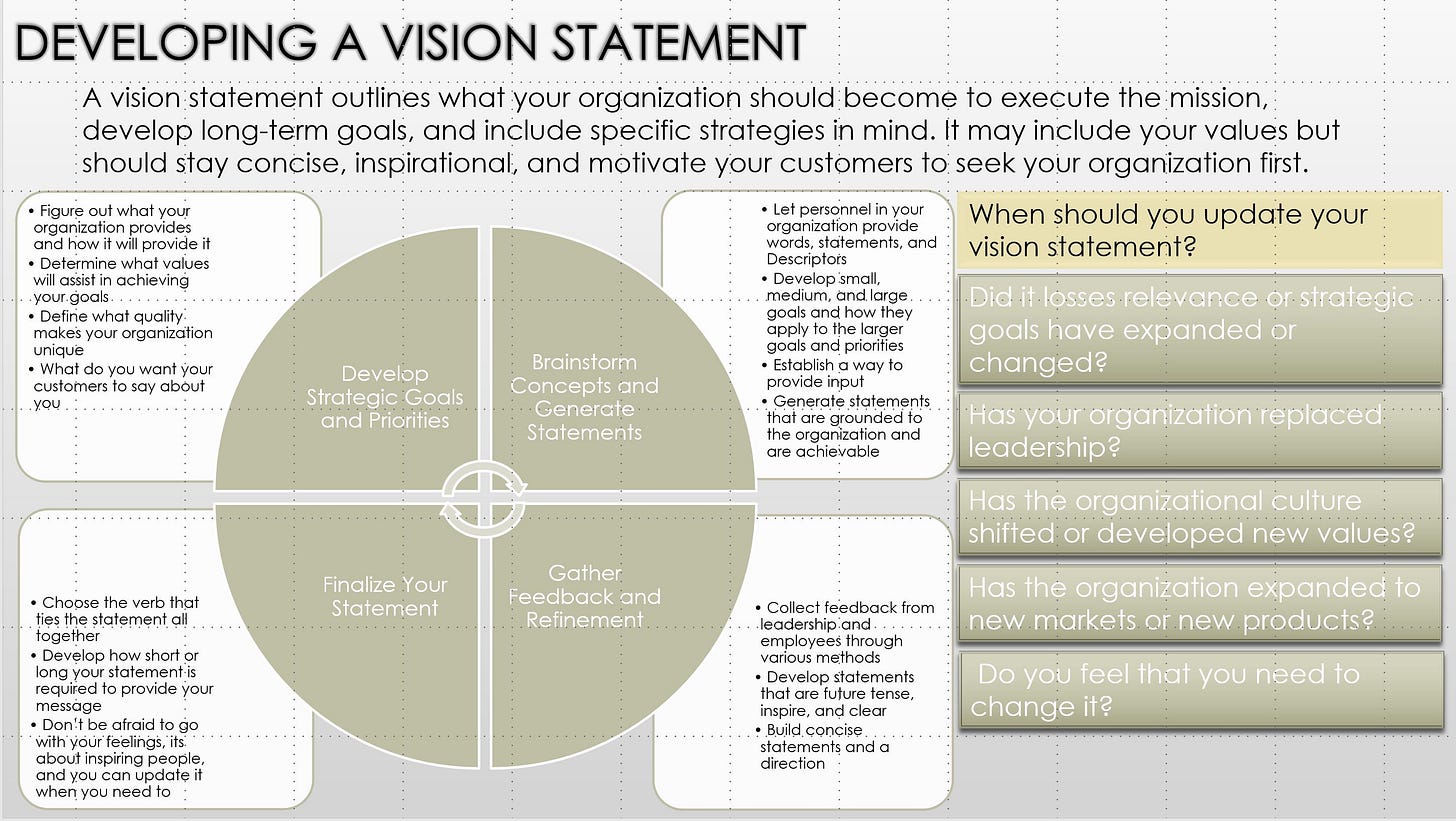
In Week 1 of our exploration into leadership, we set the stage by unraveling the profound differences between mission and vision statements. Join us on this journey as we delve deeper into the essential components that mold extraordinary leaders and organizations.
In the realm of visionary leadership, understanding the distinction between mission and vision statements is paramount. These guiding statements serve as beacons, steering organizations toward their ultimate aspirations. While both are fundamental components of planning, they play distinct roles in shaping an organization's identity, purpose, and future trajectory. Leaders will shortly find that their organization mirrors their vision whether that is bad or good. What climate do you want to set?
Mission Statement: The Essence of Direction, Motivation, and Purpose
A mission statement is the heartbeat of an organization, encapsulating its fundamental purpose and reason for existence. It should directly answer the 5 questions: who, what, when, where, and why. It also begins the development of the organizational purpose, principles, and objectives that drive daily operations. It's a concise declaration that articulates the organization's identity, who it serves, and what it seeks to achieve. A well-crafted mission statement acts as a compass, guiding decision-making and establishing a firm foundation for organizational actions.
A mission statement might succinctly express a commitment to delivering high-quality products, fostering innovation, or serving a specific community, but it should resonate in the present. Your organizational mission offers a snapshot of the organization's current priorities and responsibilities. It provides the basis of executable operations under the leader’s intent and perceived success. This is not the same as a vision statement as we will discuss next.

Vision Statement: Painting the Future Landscape
In contrast, a vision statement is a forward-looking proclamation that paints a vivid picture of the organization's desired future state. It is a compelling narrative that captures the aspirations and dreams the organization strives to realize. A well-crafted vision statement inspires and motivates stakeholders, providing a sense of goal and attitude to achieve an objective.
Consider a vision statement as the destination on the organizational journey. It articulates the long-term goals, ambitions, and the impact the organization aspires to make on the world. While mission statements develop the terrain and destination of a journey, vision statements evolve the organization's climate on the journey, setting the stage for continuous growth and development.

Harmonizing Mission and Vision for Strategic Success
Achieving visionary leadership involves harmonizing mission and vision, ensuring they work in tandem to propel the organization forward. The mission provides the groundwork for daily operations, influencing decision-making and fostering a sense of identity among employees. Simultaneously, the vision serves as a North Star, guiding strategic planning as well as enabling innovation and commitment.
Leaders must ensure that both statements are clear, concise, and aligned with the organization's goals. Regular reviews and updates are crucial to ensuring that these guiding statements remain relevant and reflective of the dynamic nature of the business landscape.
In essence, a visionary leader embraces both the mission and vision, recognizing their unique roles in shaping a purpose-driven organization. A well-crafted mission and vision set the tone for a compelling narrative that captivates stakeholders, empowers teams, and propels the organization toward enduring success.















